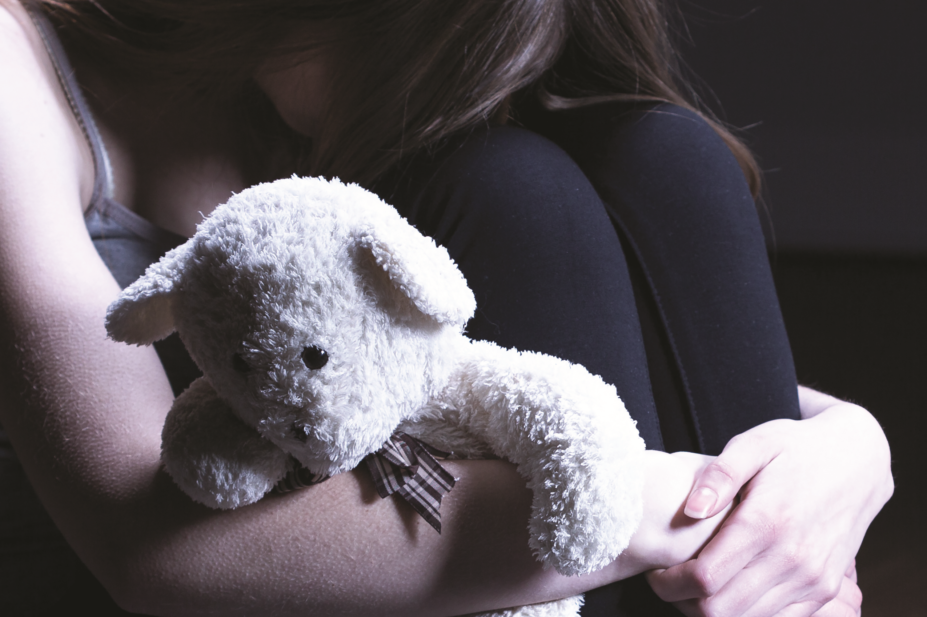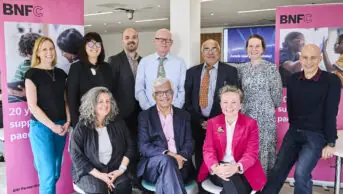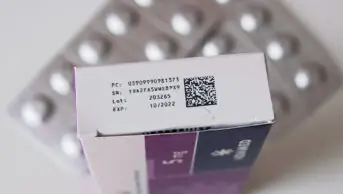
Shutterstock.com
Abuse and neglect are key safeguarding issues that can affect any child or young person, irrespective of their age, ethnicity, religious beliefs or social background. The abuse and neglect of children and young people (defined as all those who have not yet reached their 18th birthday) can take place in a family, institution, community or internet-based environment, and the abuse could be perpetrated by those known to them or by a stranger, including abuse by an adult, multiple adults, a child or children.
Official statistics on how many children and young people have been identified by the authorities as being at risk of, or experiencing, abuse or neglect are limited, as many children and young people do not recognise that they are being abused or neglected; therefore, they are unlikely to report it. However, the National Society for the Prevention of Cruelty to Children, a UK charity, estimates that more than 500,000 children are abused in the UK each year[1]
, while the Children’s Commissioner’s inquiry estimated that in March 2016 there were at least 199,720 children in need as a result of neglect or abuse[2]
.
In October 2017, the National Institute for Health and Care Excellence (NICE), the health technology assessment body, published guidance to support health and social care professionals in recognising and responding to abuse and neglect in people under the age of 18 years[3]
. The full guideline covers physical, sexual and emotional abuse, and neglect, and aims to help all healthcare professionals, including pharmacists and pharmacy teams, to spot signs of abuse and neglect, and inform them of what should be done in response.
All pharmacists and pharmacy teams are likely to encounter children during the course of their normal working activities. This puts them in a unique position to observe signs of abuse or neglect, and changes in behaviour that may indicate a child could be being abused or neglected.
This article will provide definitions for child abuse and neglect; outline the potential signs and indicators, including how pharmacy professionals may be able to spot signs of abuse; the role of pharmacists and pharmacy teams; and helpful techniques to support effective communication and information gathering.
Definitions of child abuse and neglect
The term ‘child abuse and neglect’ includes all forms of physical and emotional ill-treatment, sexual abuse, neglect and exploitation that results in actual or potential harm to a child or young person’s health, development or dignity[4]
.
Abuse and neglect are forms of maltreatment, and individuals may abuse or neglect a child by either inflicting harm or by failing to act to prevent it. As such, abuse can also be a lack of love, care and attention, which can be just as damaging as physical abuse[4]
. Child abuse and neglect can have major long-term impacts on all aspects of the person’s health, development and wellbeing, and can last into adulthood[5]
.
Types of child abuse can also include domestic abuse, bullying, cyber-bullying (online abuse), child sexual exploitation and female genital mutilation. An extensive list of what constitutes child abuse can be found in the NICE guidance[3]
. It is important to recognise that an abused child or young person will often experience more than one type of abuse over a period of time, rather than the abuse being a one-off event. It is unlikely that an affected person will tell you that they are being abused or neglected.
Recognising and responding to the signs and possible symptoms of child abuse and neglect can be difficult. Many healthcare professionals, including pharmacists and pharmacy teams, will face multiple challenges when working with children, young people and their families when child abuse is a concern. These include:
- Knowing ‘when to be worried’;
- Being able to assess levels of risk and need;
- Being aware of which interventions are effective when there are early signs of abuse and neglect;
- Knowing which interventions are effective in helping children and young people to recover following child abuse and neglect, and how to support families in which there has been child abuse and neglect.
Signs and indicators of possible child abuse and neglect
Identifying child abuse and neglect can be challenging and, as such, it can be difficult to take early action to protect a child or young person from abuse. The signs and symptoms outlined in Box 1 are possible indicators that a child or young person is at risk of, or suffering from, abuse and/or neglect.
Box 1: Possible indicators and warning signs that a child or young person is at risk of suffering from abuse and/or neglect
- Changes in behaviour or emotional state (e.g. recurrent nightmares, extreme distress, appearing withdrawn or displaying aggression) that are a departure from what would be expected for their age and developmental stage, and is not fully explained by a known stressful situation (e.g. bereavement, parental separation or medical cause);
- Dissociation (transient episodes of detachment that are outside the child’s control and that are distinguished from daydreaming, seizures or deliberate avoidance of interaction) that is not fully explained by a known traumatic event unrelated to maltreatment;
- Poor appearance and hygiene (e.g. smelly, dirty, unwashed clothes, inadequate clothing, seeming hungry or turning up to school without having breakfast or any lunch money, frequent and untreated nappy rash in infants);
- Health and development concerns (e.g. untreated injuries, dental problems, repeated accidental injuries caused by lack of supervision, recurring illnesses or infections, missed vaccinations, poor muscle tone or prominent joints, skin sores, rashes, flea bites, scabies or ringworm, thin or swollen abdomen, anaemia, tiredness, faltering weight or growth or not reaching developmental milestones [known as failure to thrive], poor language, communication or social skills);
- Housing and family concerns (e.g. living in an unsuitable home environment including having no heating, sanitation or clean water, and being left alone for periods of time without a carer or other family members);
- Substance or alcohol misuse;
- Self-harm;
- Eating disorders/disordered eating;
- Suicidal behaviours;
- Bullying or being bullied;
- Missing/running away from home or care;
- Sexual behaviour that is inappropriate for age, indiscriminate, precocious or coercive.
Further detailed information on the clinical features of abuse and neglect (including physical injury) are covered in the NICE guideline (CG89) on child maltreatment[6]
.
Role of pharmacists and pharmacy professionals
Pharmacists and pharmacy professionals should be aware of child abuse and neglect, and its impact on health, in order to be able to identify its signs and indicators in the children and young people they work or come into contact with. Pharmacists and pharmacy professionals in all sectors should be aware of their responsibilities and will need to work with colleagues from other disciplines and agencies to provide appropriate care for these individuals. A number of publications have highlighted the responsibilities of all healthcare professionals in these situations[7],[8]
.
Children and young people affected by abuse and neglect can present to a wide range of health settings with a range of physical and/or emotional problems. In particular, pharmacists and pharmacy professionals should:
- Understand their role in identifying children and young people at risk of, or experiencing, abuse and neglect;
- Be able to identify the risks, warning signs and indicators of abuse and neglect;
- Recognise that children and young people who are being abused or neglected may find it very difficult to tell someone; therefore, they must communicate and engage with them in a way that develops trust — this may enable them to discuss their issues;
- Know and understand their organisational and multi-agency safeguarding arrangements and processes, including who to contact when concerned about a child or young person;
- Know how to contact their lead safeguarding professional for advice and support;
- Share information with and make referrals as appropriate to other agencies (e.g. police and children’s social care).
Some healthcare professionals may feel uncomfortable raising concerns relating to the abuse and neglect of children and young people for a number of reasons, including: the discomfort of disbelieving, suspecting or wrongly blaming a parent or carer; fear of complaints; and fear for personal safety. However, these should not prevent healthcare professionals from following the appropriate course of action to prevent further harm to the child or young person.
Safeguarding is of paramount importance, and must be the first priority, because all children and young people have the right to be safe and protected from harm. For all healthcare professionals, irrespective of their role, safeguarding children and young people is everyone’s responsibility.
To fulfil these responsibilities, all pharmacists and pharmacy staff should have access to the appropriate single-agency safeguarding training, and multi-agency training, which is offered by local safeguarding children’s boards. The intercollegiate safeguarding training competencies provides a clear framework for this[9]
.
Identifying and responding to abuse and/or neglect
There are four key steps to follow to help healthcare staff identify and respond appropriately to possible abuse and/or neglect:
Step 1: Being alert to the signs
Be alert to the signs of abuse and neglect, and understand the procedures set out in your local multi-agency safeguarding arrangements. Consider what training would support you in your role and what is available in your area[7]
.
Step 2: Questioning behaviours
The signs of child abuse and neglect may not always be obvious, and a child or young person might not tell anyone what is happening to them. Question behaviours if something seems unusual and try to speak to the child or young person alone, if appropriate, to seek further information.
If a child or young person reports that they are being abused and neglected, you should listen to them; take their allegation seriously, and reassure them that you will take action to keep them safe. You might refer directly to children’s social care and/or the police, or discuss your concerns with others and ask for help. At all times, you should explain to the child or young person the action that you are taking. It is important to maintain confidentiality, but you should not promise that you will not tell anyone, as you may need to do so in order to protect the child or young person[7]
.
Step 3: Asking for help
Concerns about a child’s welfare can vary greatly in terms of nature and seriousness, how they have been identified and over what duration they have arisen. If you have concerns about a child, you should ask for help. Discuss your concerns with your manager or named/designated professional.
It should be remembered that if you have concerns about the safety or welfare of a child or young person and believe they are not being acted upon by your manager or named/designated safeguarding lead, it is your responsibility to take action[7]
.
Step 4: Referring
If a pharmacist (or other healthcare professional) has concerns about a child’s or young person’s welfare (or believes they are at risk of harm), they should share the information with the local authority children’s social care, and/or the police, in line with local procedures. Security of information sharing must always be considered and should be proportionate to the sensitivity of the information and the circumstances. If it is thought that a crime has been committed and/or a child or young person is at immediate risk, the police should be notified without delay. More information can be found in Box 2: ‘Information sharing’[7]
.
Box 2: Information sharing
When there is a suspicion that a child or young person is being abused or neglected, this suspicion must be shared with other appropriate agencies, even where there may be issues with consent[10]
.
Sharing information can mean the difference between life and death for a child or young person. The effective identification, disruption, intervention, protection and prosecution of perpetrators of child abuse and neglect depend on effective multi-agency working.
Further support regarding the sharing of information can be obtained by contacting local named and designated safeguarding professionals or by accessing the information-sharing guide[10]
.
Communicating with children and young people
Good communication between healthcare professionals and the child or young person, as well as with their families and carers, is essential. Take a child-centred approach to all work with children and young people, and ensure they are involved in decision-making depending on their age and developmental stage.
Use a range of methods, such as drawing, books or activities (as appropriate), for communicating with children and young people. Communication should be tailored to their age and developmental stage, and take into account any disabilities (e.g. learning disabilities, neurodevelopmental disorders, and hearing and visual impairments). Also consider their communication needs by using communication aids or providing an interpreter (ensuring that the interpreter is not a family member).
When having conversations with children and young people, remember the following:
- Explain confidentiality and when you might need to share specific information, and with whom;
- Be sensitive and empathetic;
- Listen actively and use open questions;
- Find out their views and wishes;
- Check your understanding of what the child has told you;
- Be sensitive to any religious or cultural beliefs;
- Use plain language and explain any technical terms;
- Work at the child or young person’s pace;
- Give them opportunities to stop the conversation or leave the room, and follow up if this does happen;
- Explain what will happen next and when;
- Make sure that conversations take place somewhere private where the child or young person feels comfortable[3]
.
Pharmacists and pharmacy staff should remember that children and young people, for a variety of reasons, often do not directly disclose abuse and neglect. As key healthcare professionals who come into regular contact with children and young people, they should ensure they know how to engage and talk with younger people in a way that builds a trusting relationship.
There are six key messages young people affected by abuse have said they want from healthcare professionals:
- They want to be listened to, heard and believed;
- They do not want to have to keep explaining what happened to them over and over again;
- They want to be involved in decisions about their lives, and be updated on the matters that affect them;
- They want healthcare professionals to be realistic and honest, but to do this gently and recognise that it may be difficult for them to hear what they have to say;
- They want consistent support from the same person — and, where possible, to have some say in who this person is;
- They want to be seen as an individual, not just a service user — someone with potential, just like the professional was at their age[11]
.
It should be remembered that the measure of success is not that the young person discloses what has happened — it’s that they have been noticed; something has been said; and the young person left feeling that someone cared. All conversations count, and even small signs will encourage people to feel able to talk. ‘Me First’ is an education and training resource that provides information, tools and resources to support health staff working with children and young people, that may be useful for pharmacists and pharmacy professionals[12]
.
Key points to remember
- The health, safety and wellbeing of every child and young person is of paramount importance;
- Child abuse and neglect can affect any child or young person;
- Children and young people cannot consent to their own abuse;
- Safeguarding children and young people is everyone’s responsibility;
- Share information — no matter how trivial you think it may be[10]
; - Use a range of methods for communicating with children and young people that are appropriate to their age, developmental stage, disabilities and communication needs;
- Recognise that children and young people who are being abused or neglected may find it difficult to tell someone;
- Children and young people who are being abused and neglected may refuse help, but they still need to be safeguarded;
- Know your local safeguarding proceedures and who to contact for advice and support;
- If you are concerned about a child or young person always seek advice and support from your local named and designated safeguarding professionals.
Useful resources
National Society for the Prevention of Cruelty to Children
- www.nspcc.org.uk
- Telephone: 0808 800 5000
Barnardo’s
The Children’s Society
Childline
- www.childline.org.uk
- Telephone: 0800 11 11
Child Exploitation and Online Protection command
NWG Network (formerly The National Working Group for Sexually Exploited Children and Young People)
Missing Children helpline
- www.missingpeople.org.uk
- Telephone: 116 000
Me First Children and Young People Centred Communication
Reading this article counts towards your CPD
You can use the following forms to record your learning and action points from this article from Pharmaceutical Journal Publications.
Your CPD module results are stored against your account here at The Pharmaceutical Journal. You must be registered and logged into the site to do this. To review your module results, go to the ‘My Account’ tab and then ‘My CPD’.
Any training, learning or development activities that you undertake for CPD can also be recorded as evidence as part of your RPS Faculty practice-based portfolio when preparing for Faculty membership. To start your RPS Faculty journey today, access the portfolio and tools at www.rpharms.com/Faculty
If your learning was planned in advance, please click:
If your learning was spontaneous, please click:
References
[1] National Society for the Prevention of Cruelty to Children. Child abuse and neglect. Available at: https://www.nspcc.org.uk/preventing-abuse/child-abuse-and-neglect/ (accessed February 2018)
[2] Children’s Commissioner. Estimating the number of vulnerable children (29 groups). Available at: https://www.childrenscommissioner.gov.uk/wp-content/uploads/2017/07/CCO-TP3-Numbers-in-29-Groups-Alma-1.pdf (accessed February 2018)
[3] National Institute for Health and Care Excellence. NICE Guideline (NG76): Child abuse and neglect. Available at: https://www.nice.org.uk/guidance/ng76 (accessed February 2018)
[4] World Health Organization. Child maltreatment. Available at: http://www.who.int/topics/child_abuse/en/ (accessed February 2018)
[5] Lazenbatt A. The impact of abuse and neglect on the health and mental health of children and young people, Queen’s University Belfast via NSPCC. Available at: http://www.childmatters.org.nz/file/Diploma-Readings/Block-2/Neglect/4.5-impact-of-abuse-and-neglect-on-health-mh-updated.pdf (accessed February 2018)
[6] National Institute for Health and Care Excellence (NICE). Clinical Guideline (CG89): Child maltreatment: when to suspect maltreatment in under 18s. Available at: https://www.nice.org.uk/guidance/cg89/chapter/1-Guidance (accessed February 2018).
[7] HM Government. What to do if you’re worried a child is being abused. Advice for practitioners. Available at: https://www.gov.uk/government/uploads/system/uploads/attachment_data/file/419604/What_to_do_if_you_re_worried_a_child_is_being_abused.pdf (accessed February 2018)
[8] HM Government. Working together to safeguard children. A guide to inter-agency working to safeguard and promote the welfare of children. Available at: https://www.gov.uk/government/uploads/system/uploads/attachment_data/file/419595/Working_Together_to_Safeguard_Children.pdf (accessed February 2018)
[9] Royal College of Paediatrics and Child Health. Safeguarding children and young people: roles and competences for health care staff. 3rd ed. Available at: http://www.rcpch.ac.uk/sites/default/files/page/Safeguarding%20Children%20-%20Roles%20and%20Competences%20for%20Healthcare%20Staff%20%2002%200%20%20%20%20(3)_0.pdf (accessed February 2018)
[10] Department for Education. Information sharing: advice for practitioners providing safeguarding services to children, young people, parents and carers. Available at: www.gov.uk/government/publications/safeguarding-practitioners-information-sharing-advice (accessed February 2018).
[11] University of Bedfordshire. What young people affected by sexual exploitation have told us about the support they want from you. Available at: https://www.beds.ac.uk/__data/assets/pdf_file/0020/461432/RBF-6-FactorLS.pdf (accessed February 2018)
[12] Health Education England. Me First Children and Young People Centred Communication Model. Available at: http://www.mefirst.org.uk (accessed February 2018)


